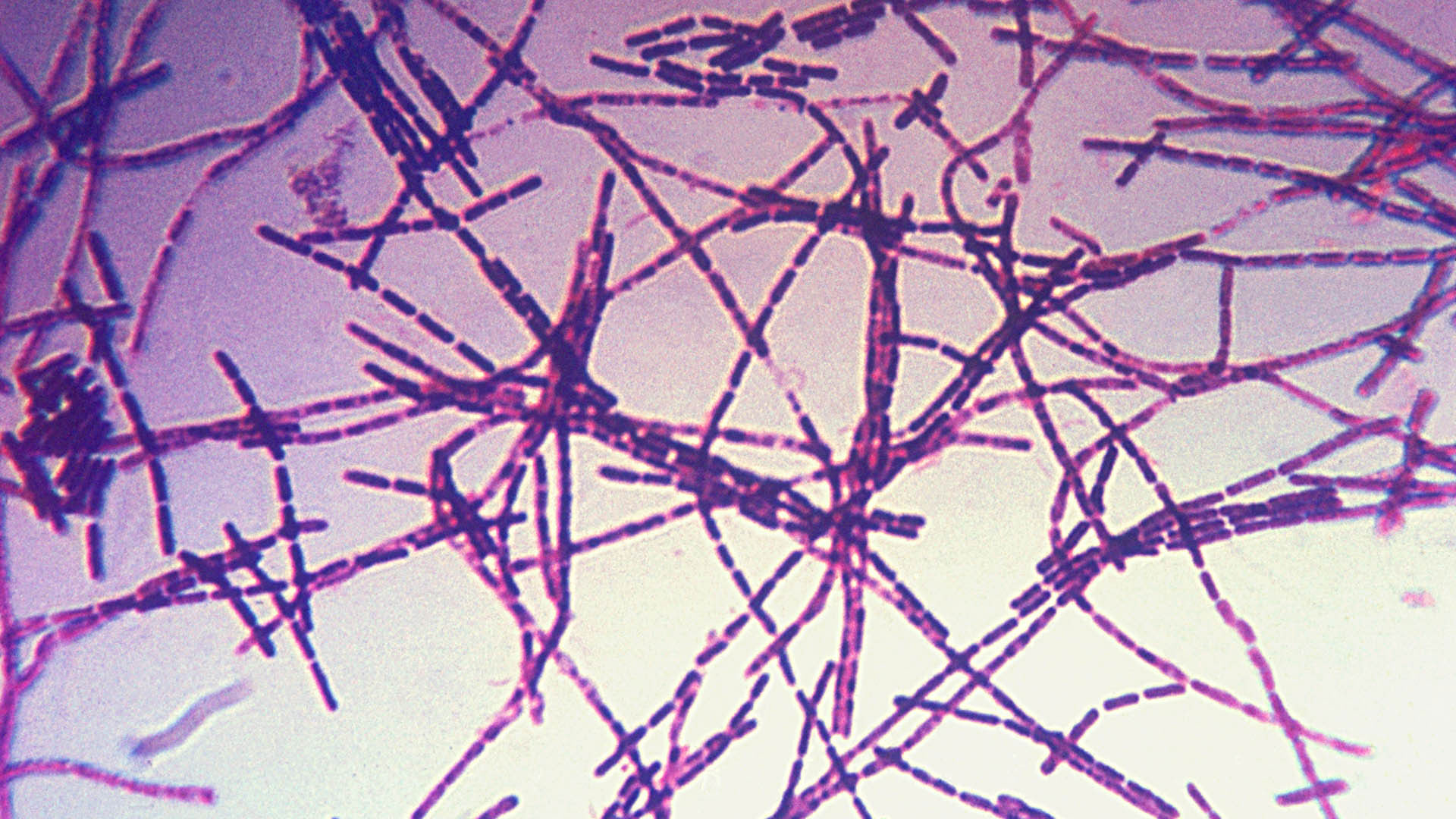
On Sept. 3, the Wyoming Game & Fish Department—through the Wyoming State Veterinary Laboratory—confirmed a case of anthrax in a dead moose in Carbon County. The Wyoming Livestock Board recently informed Game and Fish that cattle near Elk Mountain have tested positive for anthrax.
The last confirmed case of anthrax in wildlife in Wyoming was in 1956 in Sublette County. This recent detection in a moose is the only documented case reported in wildlife at this time.
The Bacillus anthracis bacteria (seen above) is the most common cause of anthrax. “It's found naturally in soil around the world and commonly affects livestock and wild animals,” according to the U.S. Centers for Disease Control and Prevention (CDC). “People usually get sick with anthrax if they come in contact with infected animals or contaminated animal products. People can breathe in anthrax spores, eat food or drink water contaminated with spores, or get spores in a cut or scrape in the skin.”
The spores can persist in the ground for decades and emerge when the ground is disturbed or flooded. Disturbance is common in summer months, when conditions may alternate between rain and hot, dry weather, which allows spores to be released from contaminated soil and ingested by livestock or wildlife.

The Wyoming Game & Fish Department is advising hunters and the public to take the following precautions:
- If you encounter dead cattle or wildlife, do not approach, handle or move carcasses.
- Do not harvest an animal that looks sick. Early signs of anthrax can include respiratory difficulty and disorientation. After death, infected animals tend to bloat very quickly and you may see black, tarry blood coming out of natural body openings (e.g., nose, mouth, anus).
- It is always recommended to wear gloves while field dressing or handling harvested animals.
- Do not pick up roadkill in the Elk Mountain area.
- Keep dogs, horses and other pets away from animal carcasses you come across in the field.
- If hunters encounter deceased wildlife, note the location or take a GPS pin and report findings to the Wyoming Game & Fish Department. You can report a wildlife disease incident onlineor by calling the department’s Wildlife Health Laboratory at (307) 745-5865.
- Human cases are rare, but precautions are warranted. If you have concerns that you may have come into contact with an anthrax-infected animal, contact the Wyoming Department of Health and seek medical attention.
Symptoms depend on the type of infection—inhalation, through the skin or gastrointestinal—and can “show up anywhere from 1 day to more than 2 months after you're exposed to the bacteria that cause anthrax,” according to the CDC.
The Wyoming Game & Fish Department will continue to monitor the situation and assess wildlife impact. If changes occur that require further action, hunters will receive updates through e-mails and posts on the Game and Fish website.




































